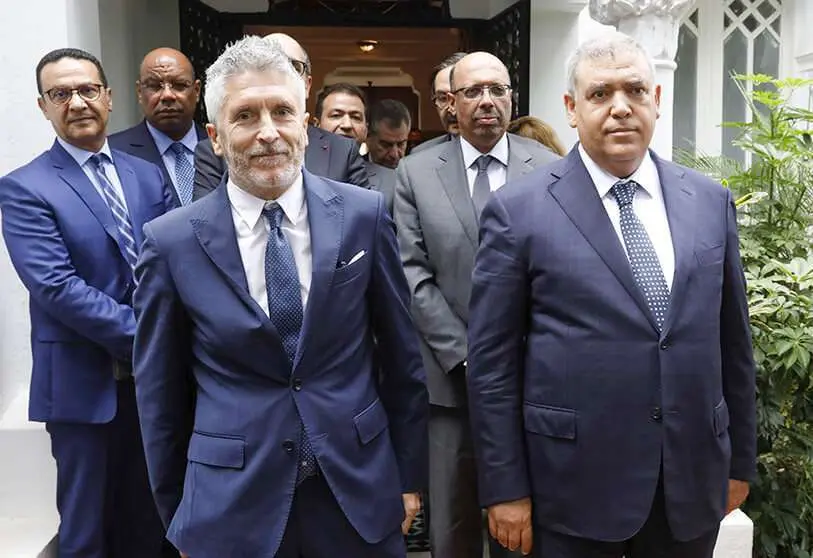Grande-Marlaska viaja a Marruecos para tratar la crisis migratoria

Morocco is in a delicate position. While dealing with the clashes in the south against the Polisario Front, it also has to meet with Spain and negotiate the terms of repatriation of its Moroccan migrants.
The Spanish Minister of the Interior, Fernando Grande-Marlaska, arrives in Morocco on Friday at the height of the migration crisis in the Canary Islands, where 18,000 irregular arrivals of migrants have been recorded this year, half of them in the last month alone.
Although the Spanish government does not provide details of the nationalities of the arrivals, it is estimated that half of them are Moroccans, and Marlaska's visit is therefore seen as an attempt to reach an agreement with Rabat on new mechanisms for repatriating its nationals and studying how to strengthen Moroccan control of the Atlantic coasts.
The migratory pressure, which was traditionally concentrated on the coasts of the Straits and the Mediterranean, has shifted to the coasts of southern Morocco and, above all, the Western Sahara, where both the candidates for emigration and the mafias that transport them have moved, according to all the experts.
The inhabitants of the city of Tangier, the usual departure point for emigration, told EFE that the sub-Saharans, who were concentrated in neighbourhoods such as Boukhalef and Moghogha, have disappeared from there and have moved to the Saharan cities of El Aaiún and Dajla in the hope of finding an opportunity to set sail.
The same direction has been taken by the many Moroccans, generally very young (between 15 and 25 years old) who leave their homes in a year when the drought and the economic collapse of the pandemic have combined, particularly among the small agricultural workers.
The Moroccan government estimates that the unemployment rate could rise by four percentage points this year to 13 per cent of the population, with a particular impact on young people aged 15-30, who traditionally account for two-thirds of the total unemployed.
The strict confinement measures decreed in Morocco against the coronavirus between April and June led to a drastic decrease in the number of boats leaving for Spain, but when the restrictions were lifted, these departures soared from the summer.
There is one detail that makes migratory control more difficult: the powerful zodiacs are hardly used to sail the sea any more, but the migratory nets prefer the wooden boats used by the fishermen, which can go more unnoticed. The same applies to the cayucos that arrive in the Canaries from Senegal: they are fishing boats that are thrown into the sea with apparent normality.

With Mauritania, another country of departure on the "Canary Islands route", Spain has a well-oiled mechanism for repatriation flights: when an irregular migrant is deemed to have arrived in the Canary Islands from the Mauritanian coast, the Maghreb country agrees to receive them back on repatriation flights.
Using this mechanism, four planes left for Mauritania from Canary Islands airports before the pandemic (with 162 migrants on board) and a fifth last month. Immediately after landing, all of them were expelled from Mauritania to Senegal and Mali, the main points of origin.
But with Morocco the repatriations have been and are more difficult, and above all more inconstant, although neither Rabat nor Madrid ever provide details of these agreements for the return of migrants.
For its part, Morocco also practices repatriations with different sub-Saharan countries: between September and November, at least six planes left Moroccan airports for Senegal, Mali and Guinea Conakri, the biggest countries of origin of irregular emigration.
These flights are generally agreed on with the migrants' countries of origin, according to Moroccan diplomatic sources, who describe them as "humanitarian repatriations", although they are not carried out in coordination with the UN agencies present in Morocco.
Morocco prides itself on being one of the few African countries with an emigration strategy that has enabled some 50,000 people to be documented, but the double crisis of drought and pandemic has dealt a severe blow to the informal economy, where this population generally finds employment, and now a good percentage of them have gone into illegal employment.








